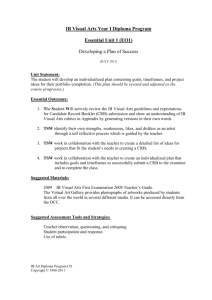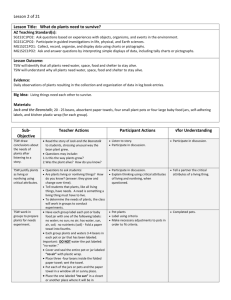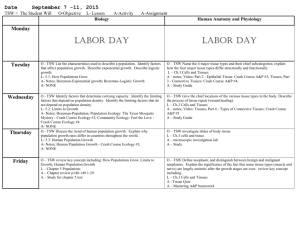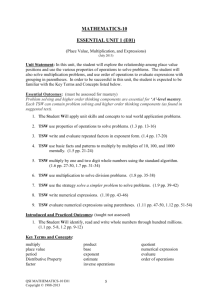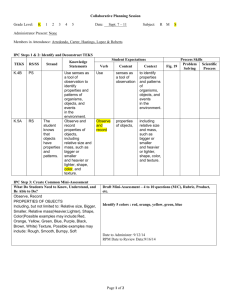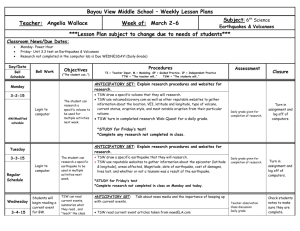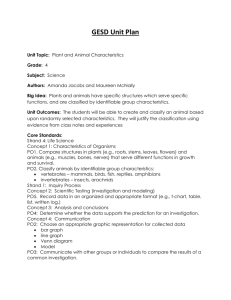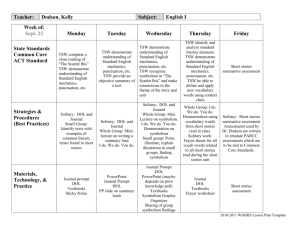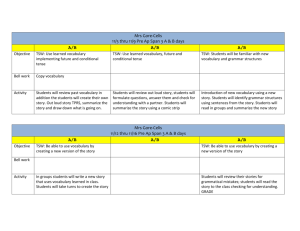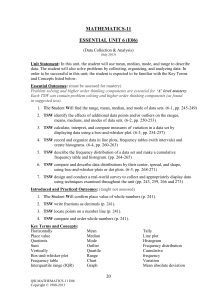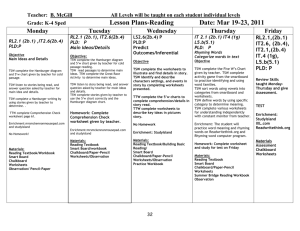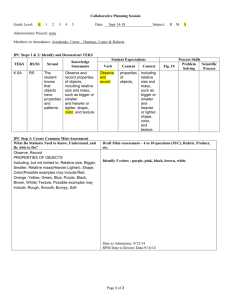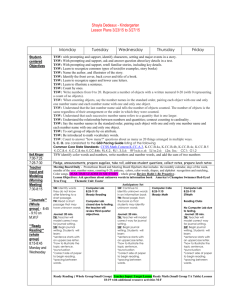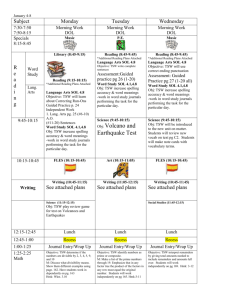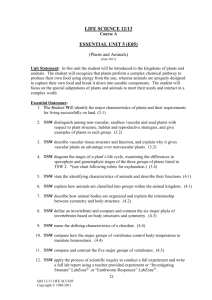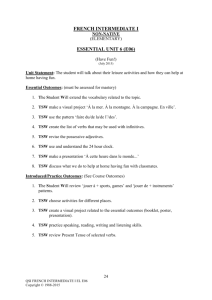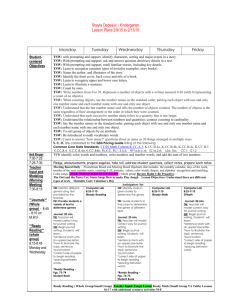12-13 LIFE SCI E05 Rubric
advertisement
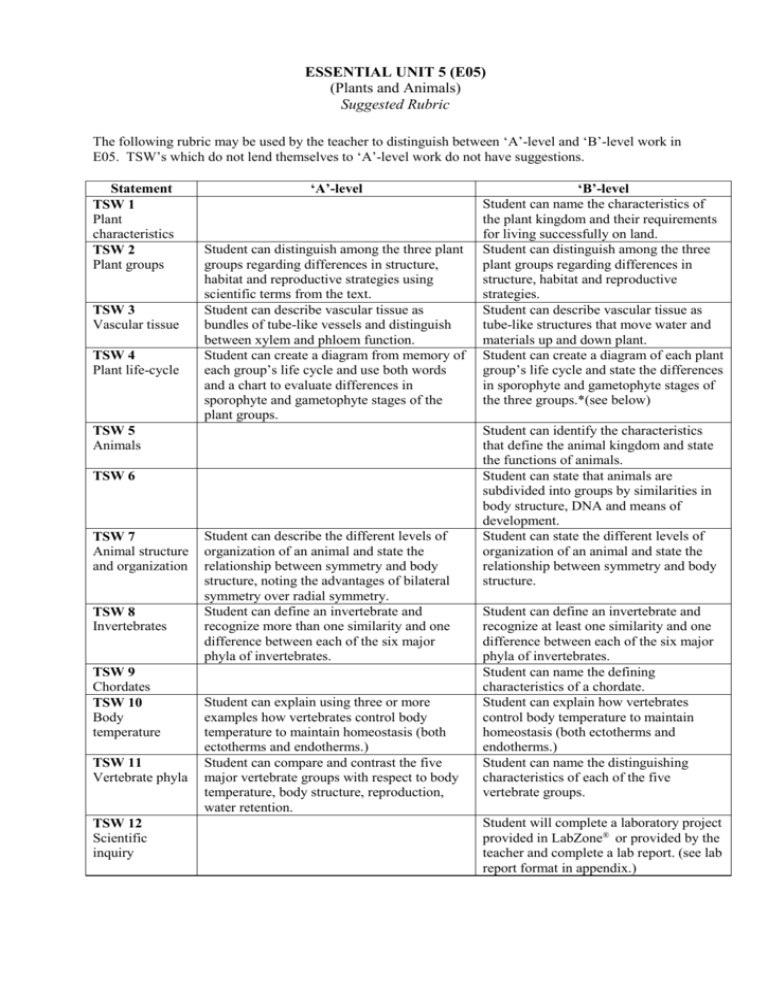
ESSENTIAL UNIT 5 (E05) (Plants and Animals) Suggested Rubric The following rubric may be used by the teacher to distinguish between ‘A’-level and ‘B’-level work in E05. TSW’s which do not lend themselves to ‘A’-level work do not have suggestions. Statement TSW 1 Plant characteristics TSW 2 Plant groups TSW 3 Vascular tissue TSW 4 Plant life-cycle ‘A’-level Student can distinguish among the three plant groups regarding differences in structure, habitat and reproductive strategies using scientific terms from the text. Student can describe vascular tissue as bundles of tube-like vessels and distinguish between xylem and phloem function. Student can create a diagram from memory of each group’s life cycle and use both words and a chart to evaluate differences in sporophyte and gametophyte stages of the plant groups. TSW 5 Animals TSW 6 TSW 7 Animal structure and organization TSW 8 Invertebrates TSW 9 Chordates TSW 10 Body temperature TSW 11 Vertebrate phyla TSW 12 Scientific inquiry Student can describe the different levels of organization of an animal and state the relationship between symmetry and body structure, noting the advantages of bilateral symmetry over radial symmetry. Student can define an invertebrate and recognize more than one similarity and one difference between each of the six major phyla of invertebrates. Student can explain using three or more examples how vertebrates control body temperature to maintain homeostasis (both ectotherms and endotherms.) Student can compare and contrast the five major vertebrate groups with respect to body temperature, body structure, reproduction, water retention. ‘B’-level Student can name the characteristics of the plant kingdom and their requirements for living successfully on land. Student can distinguish among the three plant groups regarding differences in structure, habitat and reproductive strategies. Student can describe vascular tissue as tube-like structures that move water and materials up and down plant. Student can create a diagram of each plant group’s life cycle and state the differences in sporophyte and gametophyte stages of the three groups.*(see below) Student can identify the characteristics that define the animal kingdom and state the functions of animals. Student can state that animals are subdivided into groups by similarities in body structure, DNA and means of development. Student can state the different levels of organization of an animal and state the relationship between symmetry and body structure. Student can define an invertebrate and recognize at least one similarity and one difference between each of the six major phyla of invertebrates. Student can name the defining characteristics of a chordate. Student can explain how vertebrates control body temperature to maintain homeostasis (both ectotherms and endotherms.) Student can name the distinguishing characteristics of each of the five vertebrate groups. Student will complete a laboratory project provided in LabZone® or provided by the teacher and complete a lab report. (see lab report format in appendix.) Note that the following information is not clearly delineated in Pearson’s text and should be taught in order to make this clear to the students and demonstrate the increasing complexity of plants. Sample chart comparing stages in plant groups Non-vascular Vascular, spore-bearing Is dominant, most visible Sporophyte Grows out of and is dependent on stage gametophyte Very small, but gametophyte Dominant, provides water and nutrients to independent from the the sporophyte sporophyte Vascular, seed-bearing Is the dominant and only visible stage Microscopic and depends completely on sporophyte

